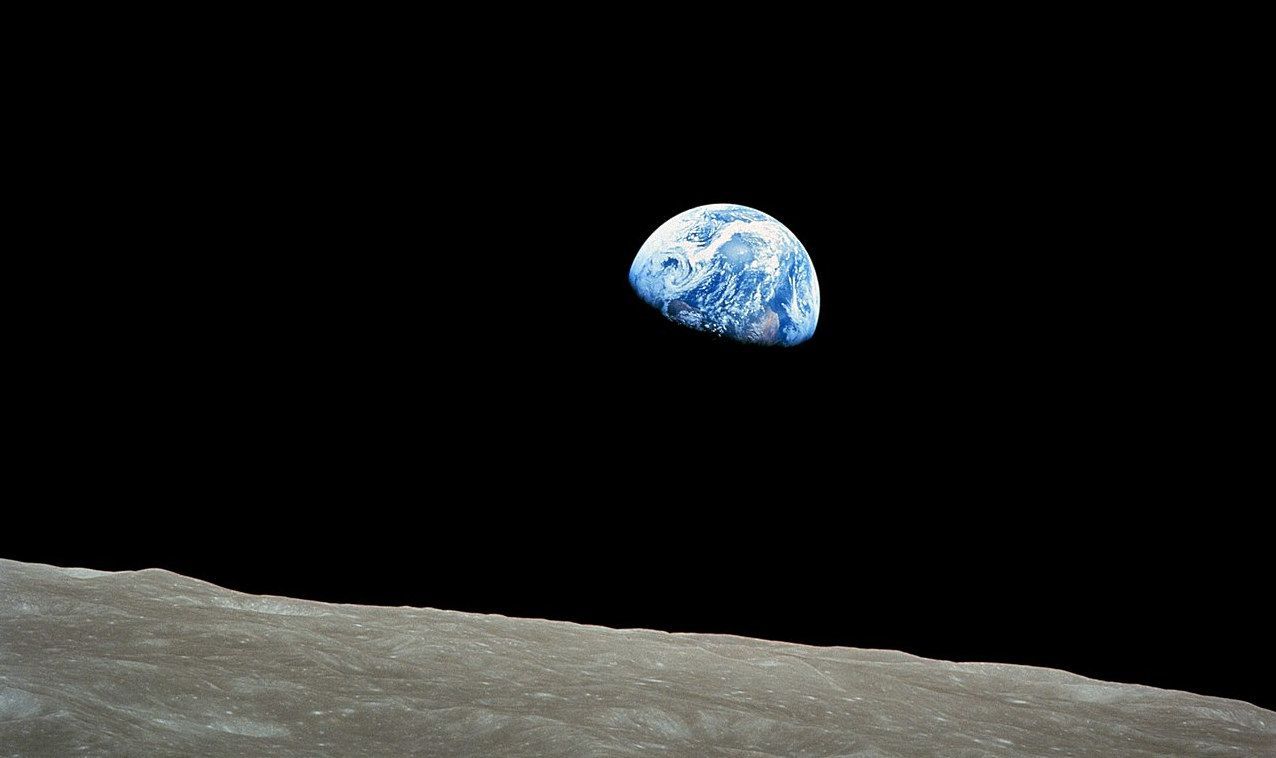Earthen Ways
In our planet's relentless shift from grey to green over the eons we can observe five principles that compose the Earth’s pattern of process:

FOR TOO LONG we have assumed the Earth beneath us to be a static and stable constant. In fact, it is anything but. The coalescence of cosmic matter and stellar energy that first formed our planet has never stopped unfolding. The results of a vast cosmological confluence, with no vestige of a beginning and no prospect of an end1, the resulting array of the Earth’s elements, solar distance, spin, orbit, moon and magnetosphere compose a pattern of process utterly unique in our solar system 2.
Indeed, in our entire galaxy we know of no other entity that has been so successful in cultivating the very ecological enrichment to which we so aspire and long to replicate. Truly, the transformation of our once barren planet into a thriving biosphere is the penultimate example of ecological enrichment.
Having moved on from our human-centrism to recognize our innate kinship with our fellow Earthlings, we can at last begin to grasp the cosmological character of our common home. And of ourselves. In the unfolding resonance of our scientific and kincentric knowing, we can begin to discern an underlying pattern in the Earth’s ways.3
In the way that kincentric societies have followed the example of ancient masters of ecological integration, so too can we. By surveying the planet’s shift over the eons from grey to green we can observe five principles that compose the Earth’s underlying pattern of process:
1. The Earth’s processes tend towards cycles that spiral.
2. The Earth’s cycles tend towards the outwards dissipation of energy.
3. The Earth’s cycles tend towards the inwards concentration of matter.
4. The Earth’s cycles of energy and matter tend toward the diversification of its systems.
5. The Earth’s systems tend towards ever greater consciousness of their interconnection.
From organism to ecosystem, from biome to biosphere, we are surrounded with the verdant consequences of these primordial principles applied. Whether the process is minute or massive, ancient or ongoing, in looking closely, we can see the same Earthen ways reflected and embodied— a microcosm of the macro within every organism and ecosystem. Within the life-cycles of everything from a forest to a tree, a bird to a flea, we can observe the tendencies of the Earth’s character expressed— a vast symphony of a trillion instruments all tending their tune towards a more resilient, livable, vibrant and abundant biosphere for all.4
While there are hints of these tendencies upon other planets, upon ours, they definitively incline the cycles of matter and energy, setting the Earth apart in their clarity of expression and consequence.

Yet the Earth is not in this way an exception. Given the unique stellar confluence of every planet, each has its own unique cosmological character. From the endless storms of Jupiter to the endemic volcanoes of Venus to the very color of Mars, each planet’s character tends towards its own unique expressions of surface, ocean and atmosphere.
Nevertheless, such tendencies are not hard and fast rules. Not all storms on Jupiter turn to giant red spots, not all Venusian mountains erupt and not all rocks on Mars are red. Likewise, not all of the Earth’s cycles express Earthen tendencies with equal clarity and consequence5. In this way, over the eons, certain Earthen organisms and ecosystems have come to express the Earth’s tendencies more than others.
In the next five chapters, we shall examine five Earthen phenomena that have attained an exceptional magnificence in their expression of one of the five Earthen characteristics. Through the lens of kincentricism and the guidance of physics, biology and astronomy we will examine the ways of the Igorots, the cycles of the salmon, the manner of mollusks, the biodiversity of ancient oceans and the consciousness of a mycorrhizal forest. Each shall aid us in discerning the essence of a particular Earthen principle, and together reveal the full character of ecological contribution.
What we call an Earthen ethics.
Using Earthen ethics, we can confidently discern and define what is green (what is an ecological contribution) and what is grey (what is not). What is green is that which embodies the six Earthen principles and leads to a more vibrant, stable, resilient, abundant and conscious biosphere. What is grey is that which conflicts with any one of the Earthen principles, leading to the opposite— lowering consciousness, reducing biome abundance, vibrancy and stability, and decreasing resiliency.
With the correlation between Earthen principles and consequences clear, we are availed a new and commanding clarity. We are assured that by embodying the Earth’s ways in our own processes, they will have like greening consequences. Emerging from hubris humbled and despair delved, we can at shake our human-centric shackles and align our longing to enrich our ecosystems with tried-and-tested parameters for its realization.
Then, with a renewed perspective of our planet and our place on it, we shall return to our plastic.
As the embodiment of our last century of petro-capitalism and the incarnation of our human-centric society, it has a key role yet to play in showing the way towards the green world for all that we all long to see.

Banayan Angway and Russell Maier; an Igorot wisdom keeper and a western philosopher, met ten years ago to protect the Chico River in the remote Northern Philippines from an inundation of plastic pollution. Ever since, their exploration of the modern relevance of kincentric wisdom has steadily unfolded. They are now publishing a treatise of their insights as a comprehensive theory of green and grey. READ: The Full Story of the Tractatus Ayyew
NEXT: Chapter 7 | Towards Cycles that Spiral
PREVIOUS: Chapter 4 | Another Knowing
WHAT IS THE TRACTATUS AYYEW? The Story
Footnotes
1Thomas Hutton, (1788) A Theory of the Earth, Royal Society of Edinburgh, Transactions of the Royal Society of Edinburgh, Vol. 1
2Thomas Nail presents not only a profound critique of this notion, but a theory of the Earth’s ongoing dynamic unfolding. (2021), Theory of the Earth, Standford University Press.
3As described in chapter 6, we view the Earth as a whole, self-contained, planetary system in which human system are subset. In this way, when we allude to "following the Earth's example" we do so with particular mindfulness of the 'naturalistic fallacy' ("because it is natural to do things a certain way, we ought to do things that way"). While this fallacy certainly pertains to is/ought arguments between two different systems (i.e. 'the human world' and 'the natural world'), the naturalistic fallacy loses in relevance when one system is acknowledged to be the subset of the first. In such a case, a three part is/ought/if" statement is possible: in order for the whole system to function in its characteristic way, its part ought to embody a certain characteristic of the whole if it is to work as it should. For example: we can observe the hands of a clock face go around in sequenced circles; and posit that so ought its gears if it is to keep time. Likewise we can observe that a tree removes carbon from the air; and posit that so ought its leaves if the leaf and tree are to thrive. Consequently, the careful reader of the will observe our categorical avoidance of the dichotomy of 'natural' systems and human systems (never once do we use the term 'nature' in this way). Instead, throughout the Tractatus we view human processes as an ecological subset of the Earth's biosphere.
4It is important to note that the Earthen principles do not lay any claim to why or how the Earth came to its cosmological character. We are simply observing the net change of the planet from its barren state to its biosphere state. Whether the principles themselves were laid by coincidence, a divine being, many beings, or a sentient planet is a separate matter entirely. Likewise, the great plunges in diversity, stability and consciousness (i.e. mass extinctions) that seem at odds with our principles— these are separate from our observation of net consequence of the singular Earthen process.
5Indeed, some may run contrary to it (but always a minority, otherwise their pattern would by definition form the tendency). It is much the same way that a crystal grows. The particular chemistry and conditions of a crystal tend it toward a particular expression of geometry, color and clarity. In this way, most selenite crystals grow several centimeters in length. However, given the right conditions they have been found at over 10 meters in length. See: The Cave of Crystals in in Naica, Chihuahua, Mexico.



